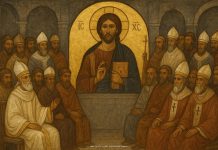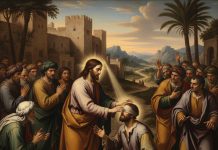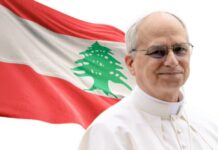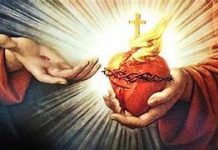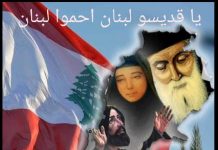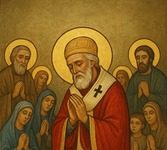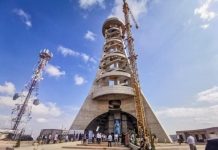Lebanon….The Legend Nation
Etienne Sacre – Abu Arz/May 19/2022
Below Is the Arabic version of this document in three parts
Introduction: Talking about Lebanon never ends. The country’s story is as old as history and requires volumes to tell all its chapters. We are therefore compelled to be concise in telling this unique and marvellous story that is akin to a legend. We shall shed light on some of the high moments when this small nation made stunning civilizational contributions to the wider world scene and left its clear imprint on the pages of history and the world’s human heritage.
First: The Land
1 – Lebanon is the first land to bear a name in history, as British historian Arnold J. Toynbee said. One of the first names it bore was “Land of El” or the land of God, El being the god of the Lebanese since time immemorial. This name is cited numerous times in the epics of Ugarit-Ras Shamra in northern Lebanon.
2 – The sea of Lebanon too was known as the “Sea of El”, the sea of God, and its fields as the “Fields of El” or fields of God. Its cognate in the Phoenician language is “Shadom-Elom”, which the French used as an inspiration for naming the most beautiful spot of their capital as the Champs-Elysees, according to Toynbee.
3 – The 14th century BC Phoenician historian from Beirut, Sanchuniathon, whose writings were explained by Philo of Byblos and was cited by Aesop the Greek, says that the name of Lebanon precedes the name of Phoenicia by thousands of years. Which means that Phoenicia is Lebanese and not the other way around, and that we were Lebanese before we were Phoenicians.
4 – Lebanon was also known by the name of Canaan who was the first to refer to himself as Phoenix and whose emblem was the eagle that rose from the dead in Phoenician rituals. It was from Canaan-Phoenix that the Phoenicians derived their name in the 3d millennium BC.
5 – Some historians believe that the name Phoenix signifies the red color in the ancient Greek language, and that the Greeks gave that name to the Lebanese in reference to the purple color that the Phoenicians extracted from the Murex shells and used to dye their clothes and the sails of their ships.
6 – According to the historians Diodorus and Herodotus, Lebanon was also known as the Fragrance Mountain because its scents and aromas filled the Lebanese coastline. As one of King Solomon’s psalms says, “The fragrance of your garments, my bride, is the like the aroma of Lebanon”, to which she replies, “And you my beloved are magnificent like Lebanon.”
7 – Lebanon was also known as the Land of Milk and Honey, for it was a land of plenty “flowing with milk and honey”. To this day, there are two rivers in Lebanon bearing the names of the “Spring of Milk” and the “Spring of Honey”.
8 – Researchers also derive the name “Lebanon” from the Hebrew word “Laban” of “Lavan” which means the color white, in reference to the snows that cover the peaks of its mountains year-round.
9 – Jawad Boulos defines the geography of Lebanon as a bond between the mountain and the coast, which may be the secret behind the perennial endurance of this country and its people through the ages. The mountain secured its protection against invaders and conquerors, while the coast opened the vast horizons of the sea upon which it built its glory, its colonies, and its legendary adventures, thus granting it worldwide reputation in the arts of sailing and commercial trade and bestowed great wealth on it.
10 – This alliance between mountain and sea granted the Lebanese individual’s character distinctive and inseparable qualities. The mountain carved in him a spirit of endurance and defiance, forbearance in the face of life’s vicissitudes, a passion for liberty, and an attachment to the land he would defend to death.
11 – The coast gave him a spirit of openness, adventure, and ambition, and an excellence in the arts of sailing, which enabled him to circumnavigate the globe by sea and discover America long before Christopher Columbus by thousands of years, as we shall see later.
12 – As for the large and fertile Bekaa Valley nudged between the Western and Eastern ranges of the Mountain, it gave its people the characters of nobility and generosity and allowed them to develop the multi-faceted skills of agriculture. It is said that in Roman times, the Bekaa Valley was able to fill the wheat granaries of Rome.
13 – The geography of Lebanon is essentially that of a longitudinal and compact mountainous mass bounded in the east by the Syrian desert and by the Mediterranean in the west. Its relatively narrow coastline hugs the shores of the Mediterranean, running about 225 kilometers from the Great River in the north to Naqurah in the south.
14 – As indicated above, the mountainous mass consists of two parallel chains:
– The Western range runs uninterrupted from north to south; its slopes overlooking the sea and are dotted with most of the towns and villages of the country. This means that the historic orientation of Lebanon is towards the sea which has, since time immemorial and to our present time, constituted Lebanon’s breathing space.
– The Eastern range which also runs uninterrupted from north to south, with its slopes ending eastward where the Syrian steppe begins, thus separating Lebanon from the Arab desert hinterland.
15 – These two mountain chains, which separate Lebanon completely and tightly from the Arabian desert, were deemed by Dr. Fuad Ephrem Bustani to be “two lines of defense” that have always constituted a natural and impervious barrier against the successive invasions that threatened it from the desert.
16 – It is our belief that the aforementioned alliance between the mountain and the seacoast was a determining factor in the establishment and prosperity of the great Phoenician kingdoms:
– The Kingdom of Tyre extended from the coast up to the hills of the Galilee
– The Kingdom of Sidon extended from the coast up to the mountains of Jezzine
– The Kingdom of Byblos extended from the coast up to the mountains of Afqa-Aqoura
Separating these kingdoms were the rivers that flowed from the mountain slopes to the sea.
17 – Tripoli, for its part, was the “federal” capital of these kingdoms which gathered there periodically to coordinate amongst themselves. They thus named it Tri-Polis – the three cities – which suggests that the Lebanese people aimed for unity into a single nation state since time immemorial.
18 – The mountain-coast duality may also be behind today’s traditional owning by most Lebanese of two homes, one on the coast to shelter in winter and another one in the highlands to shelter in summer, in a unique and ancient phenomenon.
19 – Another unique aspect of this duality is the possibility for the Lebanese to engage within half an hour in both beach (e.g., swimming) and snow (e.g., skiing) activities, given the short distances between the coast and the mountain.
20 – Whereas history is the daughter of geography, as Jawad Boulos said, and man is the product of the land, the mountain-sea alliance has imprinted in the Lebanese character a special convergence of mastering the arts of battle in times of war and the arts of commercial trade in times of peace.
Second: The People
21 – If Lebanon is the first land to bear a name according to Arnold Toynbee, it is also the first land to have been inhabited by a people according to the same historian. Evidence of this fact is found in the discovery of flint artifacts and skeletal remains of Homo Sapiens by the Jesuit archaeologist Fr. G. Zumoffen in Kanarit-Adloun in the 19th century AD.
22 – When Fr. Franklin Ewing continued the excavations with his team, he uncovered the skeleton of a juvenile he named “Egbert” that was buried in a sedimentary rock level dating back to 44,600 AD, which may be the oldest H. sapiens skeleton ever found. The Jesuit archaeologist Fr. Martens went so far as to suggest that the story of Adam and Eve and the Garden of Eden may have taken place in the town of Ehden in the north of Lebanon, and not in the Yemeni town of Aden, and that Noah’s ship rested on Lebanon’s Eastern Mountain range, and not on Mount Ararat in Armenia.
23 – The historian May Murr has asserted that the human skeletons excavated in Zahrani and Antelias may date back to 700,000 years ago, which means that the first Homo sapiens to become self-conscious and begin using his brain to think was a Lebanese individual, according to the scientific research performed on the skulls belonging to these skeletons.
24 – It was these facts that inspired Saiid Akel’s famous poem, “Qasidat Lubnaan”, which was put into song by Fairuz. In it he says, “Here on a shore or a rise / mind bloomed mind stirred.”
25 – These scientific discoveries refute claims by historians that the Lebanese people came from somewhere else, such as the Arabian Peninsula or Mesopotamia, as if the land of Lebanon was void of inhabitants and people migrated to it to fill the void.
26 – Historians do say that the name of Lebanon has not changed since its inception, despite the successive invasions that it witnessed. For the Assyrians it was “Libnanu”, for the Hebrews “Levanon”, for the Greeks and the Romans “Libanos/Libanus”, and for the Arabs “Lubnaan”.
27 – These facts affirm the ideological tenet of an original, authentic Lebanese identity, reject qualifying its identity with external attributes, and refute the claim of an Arab identity to Lebanon.
28 – In this context, we remind the Arabists and all those who seek to falsify the Lebanese identity that 400 years of Ottoman occupation, one of the longest and harshest in our history, failed to suppress or alter the identity of Lebanon. The occupier left, but the identity remained.
29 – It is extremely concerning that the falsification of Lebanon’s identity into an Arab identity was legitimized in the Taef constitution, which ought to compel the honorable patriots in this country to do their utmost to amend the constitution and rectify this historical error as soon as possible and by all means necessary. It is noteworthy that among all countries of the region, Lebanon is the only one whose land has no deserts or nomads.
30 – And since man is the product of his land, and in accordance with the dialectic of man and land and the interaction between them, and whereas the geographic milieu in which a human lives and before him his ancestors have lived has the greater impact on his nature and character, the Lebanese individual is therefore different from an African, a Scandinavian, or a desert dweller in his appearance, skin color, traditions and customs, and characteristics.
31 – And given that history is the product of geography (according to Jawad Boulos), people living in a specific geographic milieu will, over time, fashion their own nationhood, their own history including their own heritage, traditions and characteristics that distinguish them from other people. Therefore, the Lebanese people have over their long history fashioned a specific sense of nationhood, namely Lebanese Nationalism.
32 – Yet, no nation on earth can claim a purity of race or ethnicity. Wars, conquests, and human migrations have eliminated any purity of races, for they blended the original ethnic stock with outside groups, thus becoming over time an inseparable part of the nation and writing a common history with it.
33 – A perfect example of the preceding is the emergence in recent history of the American nation in the United States as a result of the cross-breeding between people of various origins and ethnicities, creating within the span of 300 years a great nation, a shining example of the rise of nations.
34 – This model also confirms that the cross-breeding between diverse peoples and groups is a source of cultural wealth for nations in contrast to what some believe, and that complete fusion requires a period of time on the order of six or seven generations, i.e., about 200 years.
35 – Closer to home here, we note that Prince Fakhreddin Maan the Great, who founded the modern State of Lebanon and extended its dominion from Aleppo in the north to Acre and beyond in the south, hailed from the Arab tribe of Maan which found refuge in the Lebanese mountains around the 10th century AD, fleeing the persecution exacted by the Fatimids of Egypt of the Druze sect. The Druze assimilated with the Lebanese people in the mountains and with time became a pillar of the Lebanese nation. Thus, some like to say that Lebanon is the product of a Maronite-Druze alliance, and that the unity of the country rests upon the unity of Mount Lebanon, whereas the truth and history say that the Lebanese nation has much deeper roots in history, long before the rise of Christianity and Islam.
36 – Prince Fakhreddin Maan the Great was very keen on promoting the country’s Lebanese identity. He rejected an offer by the Ottoman Sultan to grant him the title of Emir of Arabistan, insisting on the title of Emir of Lebanon instead, and going so far as to sign his official correspondence as Emir of Phoenicia.
37 – Prince Fakhreddin (1591 – 1635) understood the importance of the unity of Mount Lebanon – from Jezzine in the south to the Cedars in the north – as a requisite to the unification of Lebanon. He succeeded in rallying the Marada Army to his own army, which enabled him to deal a crushing defeat to the army of the Wali of Damascus at the famous battle of Anjar. This allowed him to expand the borders of Lebanon, become independent of the Ottoman Sultanate, and declare the State of Greater Lebanon.
38 – This corroborates our earlier statement on the importance of Mount Lebanon in the defense of Lebanon, where the latter derives its strength from the former. Were the people of Mount Lebanon cognizant of this foundational equation, they would not have conducted themselves in the shameful, destructive, and irresponsible manner that they did during the episodes of 1840, 1860, and 1983.
39 – On the subject of the Marada and Mount Lebanon, the commonly held yet fallacious view that the Maronites came from Syria ought to be corrected, as if the Mountain was initially somehow uninhabited and people migrated to it.
40 – The fact, however, is that the people of Mount Lebanon retained their Phoenician beliefs well into the 5th century AD, worshipping gods such as El, Baal, Adonis, Ishtar, etc. According to legend, the people in the region of Byblos-Jbayl continued to celebrate the resurrection of Adonis from death three days (emphasize three days) after he was killed by a wild boar, thanks to the supplications of Ishtar to the gods.
41 – The Adonis River was the venue for these celebrations, with people carrying torches as they trekked up the highlands to the Afqa Cave on the third day of the god’s return to life and make offerings to the gods. Meanwhile, the more urban dwellers of cities and coastal towns adopted the new religion of Christianity from its inception.
42 – During the 5th century, the monks of Saint Maron escaped from the mountains of kourosh as they fled persecution at the hands of the Jacobites and the Nestorians. They settled in Jobbet Bsharri and in the village of Kfarhayy in the district of Batroun, where they proselytized for the Christian religion.
43 – Most famous among those monks was Ibrahim Al-Qureshi whom the highland people of the Byblos-Jbayl district followed for his wisdom and piety. By the end of the 5th century, the majority of the inhabitants of the Mountain had adopted the Christian religion. They became known as the Maronites after their patron saint Maron who lived and died as an ascetic monk in the mountains of kourosh. The Maronites renamed the Adonis River as the Ibrahim River after the monk Ibrahim Al-kourshi.
44 – In the middle of the 7th century, Mar Yohanna Maroun [Mar in Aramaic means Lord, and by extension, Saint] was elected Patriarch of Lebanon. He embarked on organizing Maronite community in its national, ecclesiastical, social, and military aspects. The Mountain became an impregnable fortress against invaders and conquerors, most notably the Arab conquest which occupied the Lebanese seacoast but not the Mountain, at a time when the Muslim Arab armies were at the gates of Europe. It is said that the Arabs signed a peace treaty with the Marada in the north of the Mountain in which they paid a tribute of Arabian horses and sacks of gold.
45 – The Maronite Patriarchs of the time were known for their piety, holiness, austerity, asceticism, devotion, and their love of country. It was said of them, “Their staffs are of wood, but their hearts are of gold”. In time of war, the Patriarch sounded the bugle and mobilized the troops with their horsemen, up to 20,000 men, from all regions of the Mountain. Some of the Patriarchs liked to march at the head of their army carrying their staffs made of oak wood. They thus preserved the freedom and independence of Lebanon, well deserving of the biblical mantra, “The Glory of Lebanon was given to him” (Isaiah 2: 35).
46 – We said earlier that the Lebanese seacoast was first in adopting the incipient Christian religion, and that was for three main reasons:
First, Jesus-Christ visited no other countries except Lebanon where he performed many miracles, most notably the conversion of water to wine at the wedding in Cana of Galilee, today in the south of Lebanon. The importance of this miracle is that it took place before the time of Jesus’s divine mission and upon his mother’s request and insistence. “My hour has not come yet”, he first said to his mother, only to later submit to her will. After the miracle, the gospels tell us that “His disciples believed in him”, which means that he came to Lebanon as Jesus and became the Christ on our land (Saiid Akel).
Second, the Apostles embarked on their missions to Greece from Lebanon’s ports of Tyre, Sidon, and Byblos-Jbayl. As many of them were from the Galilee, the Apostles must have first evangelized the local Lebanese population.
Third, there is great resemblance between the Phoenician and Christian religions, so much so that some theologians said that the Phoenician religion was a precursor to the Christian religion, referring to it as “Pre-Christian”. The major similarities are as follows:
*The Phoenician god El is the only one among the ancient pagan peoples’ gods to have called for love, inviting people to seek peace at a time when wars and invasions were the discourse between humans. Manuscripts from Ugarit reveal that El said to his people, “Sow love in the bosom of the earth, and disseminate peace between people”, a statement that preceded the coming of Christ by thousands of years. It is for this reason that the wars of the ancient Lebanese were always defensive and within their own borders. Never did they engage like others did in invading or plundering the countries of other people.
-
The Phoenicians believed in life after death, as in the legend of Adonis and his resurrection from death after three days, echoing the core of the Christian faith.
-
All ancient peoples worshipped their deities by way of the sacrifice of animals like calves, rams, and others. Instead, the Phoenicians made offerings of bread and wine, which is exactly what the Christ did during the Last Supper when he blessed the bread and the wine and instructed his disciples to adopt this Phoenician custom in offering the divine sacrifice, a custom still practiced in Christian masses and churches.
-
Before surrendering his soul on the cross, Jesus lifted his eyes to the sky and called on his father saying in Aramaic, not Hebrew, “Eli, Eli, lama sabachthani”, which translates into “My God, my God, why have you forsaken me?”, and using the Phoenician god’s name rather than any other god, including Yahweh, the Jewish god.
-
And isn’t the name of the Christ as prophesized, Ammanu-El, that is “God with us”?
Third: The Heritage
47 – The ancient Lebanese civilization had reached its zenith during the Phoenician period between the 12th century BC and the third century BC. During this period, a constellation of scientists, poets, and philosophers emerged that contributed to a great extent in the development of the broader human civilization; indeed, they were its principal pillar, as we shall see later.
48 – Around the second millennium BC, our forefathers invented the phonetic alphabet when other people were using the pictorial alphabets. The Phoenician alphabet transformed the world by enabling humans to communicate with each other and express their ideas using only 22 letters. The Phoenician alphabet was then transferred to the Greeks by Cadmos and his brothers, and from Greece to the rest of the world. To this day, the alphabet is used by most countries around the world, under the unfortunately false label of the “Latin” alphabet.
49 – Cadmos and his brothers voyaged to the Greek islands in search of their sister “Europa” whom the supreme Greek god Zeus had abducted and taken to the island of Crete. There, he installed her as a queen of Crete and gave her name to the continent of Europe. This was around the year 1500 BC.
50 – Cadmos and his brothers visited several Greek islands, and having not found their sister, they feared returning without her to their father Agenor, King of Tyre, and decided to settle there. Each of them settled on an island that bore his name, and he became its ruler. Cadmos’s brothers were Cilix, Thassos, and Phoenix. Cadmos himself settled on the island of Thebes where he became king.
51 – With the arrival of Cadmos and his brothers, Phoenician civilization began spreading through the lands of the Greeks, from the alphabet, the democratic system, and all arts including literature, poetry, science, and philosophy, all the way to the know-how of sailing and commercial exchanges between people. This Cadmean-Phoenician campaign was the trigger for the rise of Greek civilization.
52 – Along the shores of the Mediterranean, our forefathers built a great empire that lasted 500 years and which disseminated science, knowledge, and the arts of writing, commerce, and such, not by the sword as other empires did. Once again, our people have from their beginnings and by their very nature, despised violence and wars because they distinctly embarked on a civilizing and humanistic mission.
53 – In addition to Africa and Europe, this civilization deployed its ships to the far shores of northern and southern America. The Phoenicians indeed were the earlier discoverers of the American continent, long before the Italian Christopher Columbus and the Scandinavian Leif Ericsson. These ships brought Phoenician civilization to the peoples of the world, beginning with the Greeks who then transmitted it to the Romans and the rest of the Western world.
54 – In his book, “The Name of Lebanon Across the Ages”, the historian Antoine El-Khoury Harb notes that archaeologists had discovered in 1872 AD in Brazil in the State of Parahiba, a rock bearing inscriptions in the Phoenician alphabet. The text of the inscriptions says, “We arrived here, 12 men and 3 women, during the reign of our king Hiram, and we ask the gods for their help”. According to the bible, King Hiram ruled over the powerful Phoenician city of Tyre between approximately 980 BC and 917 BC.
55 – Historians say that Beirut was the center of the most ancient and eminent law school in the world. Attended by the nobility of the Roman Empire, it graduated senior lawmakers who developed the Roman Code, among whom Olympianus and Papinianus who hailed from Phoenician ancestry. Beirut’s motto was, and still is, “Berytus nutrix legum” or Beirut Mother of Law.
56 – The Phoenician kingdoms of Sidon, Tyre, and Byblos adopted a system of democratic rule, that is of the people by the people. They practiced it in great transparency, as advanced nations do today.
57 – The ruling authority in Phoenician cities consisted of two councils and a government; a council of representatives elected by the people, and a senate that assembled the cultural elites and the nobles.
58 – The government ruled with the confidence of the two councils. It would resign if either of the councils withdrew its confidence. If both councils withdrew their confidence from the government, the latter was condemned. Lawmakers, however, provided the Grand Priest with the right to “withhold blood” (Saiid Akel).
59 – When the Greeks adopted the Phoenician system of governance, which was transmitted to them by Cadmos and his brothers, they attributed it to them and named it Demos-Kratos or the rule of the people or authority of the people. The Romans in turn took the democratic system from the Greeks and disseminated it throughout the western world. Democracy, just like the phonetic alphabet, is therefore a Phoenician invention, and both inventions have served human civilization like no other invention.
60 – In 814 BC, the Phoenicians built a second empire in the city of Carthage (from Phoenician “Qart-Hadasht” for “New City”. The city of Carthage was founded by Elissar (or Elissa or Dido), the daughter of the King of Tyre. The Carthaginian empire expanded and asserted its dominion from the north African coast to the Spanish coast under the rule of Hamilcar Barqa and his son Hanibaal the Great, where they founded Carthagena (Cartago-Nova, or New Carthage) later to become Spain. It was from there that Hanibaal launched his famous military campaign against the Roman Empire, crossing through the lands of the Gauls (today’s France) and up the Alps to reach Italy and threaten Rome, in a war that became known as the Punic War (Punic is from Latin poenus and punicus for Phoenician).
61 – Hanibaal occupied the north of Italy then large swaths of the peninsula after defeating the Roman army in several battles, most notably the battle of Cannae or Canna in which Hanibaal’s army crushed the enemy and killed 70,000 Romans and imprisoned several thousands. He then reached Rome and besieging it for 15 years, before losing the battle of Zama (in today’s Tunisia) after returning to Carthage which eventually fell to the Romans in 146 BC (according to George Masrouaa). The unanswered question that looms large over Hanibaal’s history is why did he refrain from entering Rome when it was militarily nearly defeated? Had he done so, he would have changed the course of history in unimaginable ways.
62 – Carthage continued the mission that the mother empire Tyre began, especially in the arts and sciences of sailing, commerce, agriculture, and warfare which Hanibaal brilliantly mastered. His military strategies are still taught today in the top military institutions around the world, as he is considered one of the celebrated commanders in history.
63 – If Carthage (in today’s Tunisia) was the daughter of Phoenicia, then Carthagena (in today’s Spain) is its granddaughter. The dialect spoken by the people of Tunis and its environs is close to the Lebanese dialect. If you ask the people of the Spanish city of Valencia, situated along the Western Mediterranean coast directly opposite the Lebanese shores on the Eastern Mediterranean, about their origins, they will answer, “Somos Fenicos” – we are Phoenicians. Near Valencia is the city of Carthagena, and not far from there is the French city of Marseille, one of the Mediterranean’s most important ports and whose name is derived from the Phoenician “Marsa-El” – El’s harbor – in honor of the Phoenician god El.
64 – The Phoenicians built many forts, edifices, and temples in honor of their gods throughout the regions of Lebanon. The archaeological remains still standing today testify to their skills in construction, sculpture, and engineering. One of the most renown of these edifices is the site of Baalbeck and its beautiful temples.
65 – The prevalent fallacy that Baalbeck is Roman is debunked by several lines of evidence, three of which are: First, its name bears the unmistakable signature of the Phoenician sun god Baal; Second, the ancient fort is located underneath the present site and was built by our ancestors two millennia before the Romans built their temples over the Phoenician site in 27 BC. Third, the manner and style of construction, engineering, form, sculpture, and the inscriptions are all Phoenician and differ markedly from Greco-Roman architecture.
66 – Following his invasion in 334 BC, Alexander the Great re-named the site Heliopolis – the City of the Sun. Later, the Romans re-named the temples of Baalbeck with the names of their own gods, Jupiter, Venus, and Bacchus, to replace the Phoenician gods Baal, Ashtarout/Ishtar and Adon. In their hellenocentric view, western historians assumed that the site was built by the Romans.
67 – All archaeologists who visited the site and studied its engineering and construction were awed at the unexplainable size of the stones used in building the temples at the site. The mass of the stones ranges from 100 to 300 tons, in addition to an exceptionally large stone known as the “Stone of the Pregnant Woman” (Hajar Al-Hublah) is the largest worked monolith on Earth, weighing a staggering 1,615 tons.
68 – The archaeologists were even more amazed at the fact that Baalbeck blends monumental size with exceptional beauty, a rare thing in ancient sites where size is often achieved at the expense of esthetics. Indeed, Baalbeck surpasses the Greek Parthenon and the Roman Pantheon in the enormity of its architecture and its elegance.
69 – The mystery persists as to how these largest worked stones on Earth could have been moved from their quarry, still unknown to this day, to the site, and then how they were raised into the walls of the edifices. Modern technology is unable today to repeat this feat, particularly with a stone like the aforementioned “Stone of the Pregnant Woman”. Some researchers, among whom the Russian scholar Lagrest, went so far as to suggest that the builders of Baalbeck are aliens from another planet who instructed the local people into the art of construction before returning to their planet.
70 – During the Phoenician cultural golden age, several names became prominent in such fields as poetry, philosophy, sciences, and others. Many of these intellectual contributions remain effective today in the global civilization and make up a good part of its foundations.
71 – It is, however, unfortunate that the Phoenician heritage was for the most part stolen and attributed to people other than the Lebanese people, particularly to the Greeks. This is due to at least two factors: First, the intense intellectual cross-fertilization that took place between the Phoenicians and the Greeks lasted long enough to make matters ambiguous for researchers and historians and prevent a clear distinction between the two civilizations. Second, the centuries-old neglect and abandonment by the Lebanese of their own heritage made it free for the taking by others, not to mention the ill-intent by many researchers and historians. Here are some of the most renown names: [See note from Joe Hitti on page 21]
72 – Homer, the poet of poets and one of the greatest of antiquity. Most references assert that he is Greek, until French historian Victor Berard (1864-1931), a specialist in researching the life and works of this great poet and the author of several volumes including “The Phoenicians and the Odyssey”, and “The Phoenicians and Homer’s Poems”, reached the conclusion that Homer was a Phoenician and not a Greek.
73 – In support of that claim is the ambiguity that surrounds Homer’s place and date of birth. Some have proposed 1200 BC as his year of birth, while for others it is 800 BC, somewhere in Asia Minor, which suggests that the Iliad and the Odyssey were written during the prosperous centuries of Phoenician renaissance that preceded the period of Greek awakening.
74 – Mochus of Sidon was born around 1200 BC and was the first to propose his Atomic Theory and was nicknamed “Father of the Atom”. He asserted that the atom can be broken down into parts and coined the name “Tomo” or “Tomos” (according to historian Strabo). Around 500 BC, i.e., 700 years after Mochus, two Greek scientists, Leucippus and Democritus, subscribed to Mochus’s theory but proposed that the atom cannot be broken down into smaller parts and gave it the name “Atomos”.
75 – We now know, ironically, that the atom has been broken down into smaller pieces, just as Mochus the Sidonian proposed 3,000 years ago. It is perhaps time to change the name of the particle from “atom” to “tomos”.
76 – Pythagoras, a philosopher and scientist of the 5th century BC, was born on the island of Samos to a father from the Phoenician city of Tyre and a Greek mother. He was schooled in Tyre and Byblos, graduating from a school in Sidon at the hands of Mochus’s disciples, according to philosopher Jam Belik.
77 – Thales, philosopher and scientist, was born around 547 BC from two Phoenician parents according to historian Herodotus. Plato reports that Thales descends from the lineage of Agenor, King of Tyre, and his son Cadmos.
78 – Euclid, philosopher and scientist, nicknamed “Father of Geometry”, was born in Tyre around the middle of the 4th century BC. He moved to Athens, then to Alexandria where he lived and taught.
79 – The philosopher Zeno, who founded the Stoicism school, was born in Tyre around 334 BC. He lived in Cyprus and Greece and died in 262 BC.
80 – Porphyry of Tyre, a philosopher known for his “Porphyrian Tree” describing the classification of matter and the superiority of quality over quantity, was born in Tyre in 234 AD. He died in 315 AD.
81 – The historian Strabo says, “Whoever wants learning should go to the schools of Tyre and Sidon”. Which is why we find that a majority of the intellectual giants in philosophy, science, and poetry graduated from these schools, as mentioned above.
82 – Some might argue that we exaggerate in our attribution of the origins of those giants in philosophy and science, because the prevalent belief is that they were Greeks. Not surprising since most references we rely on are Greek.
83 – Accordingly, we propose the appointment of a committee comprising an elite of Lebanese researchers and historians, whose mission is the gather all documents and evidence pertaining to this highly critical national issue and forward them to competent international bodies such as the various encyclopedias, UNESCO, Wikipedia, Google, and others with the stated objective of correcting this blatant historical error and restitute Lebanon’s rights to its pilfered heritage.
84 – We said earlier that the Lebanese did not engage in external wars during their long history. Their wars were rather of the self-defense kind and within Lebanon’s borders. This ancient custom is attributed to the nature of the peace-loving, tolerant Lebanese people who reject violence and seek open cultural exchanges with the world. Yet, when the issue requires defending the nation and their own self-defense, the Lebanese can change into tough and masterful warriors. The following are a few shining and dignified milestones in our military and militant history.
85 – After the Babylonian king Nabuchodonosor occupied the city of Jerusalem in 605 BC, deporting its people to his kingdom, he came to Tyre and besieged it in order to subdue it. But Tyre resisted for 13 years, forcing him to lift the siege, sign a peace treaty, and return disappointed to Babel.
86 – The Persian king Artaxerxes (465 – 424 BC) invaded the region with his large army of 330,000 troops. Upon arriving to Sidon, the city’s king, Tennes decided to hand over the city. The Sidonian people refused and decided to confront the invader, placing a young woman by the name of Ashtarim at the command of the army. She ordered to mobilize anyone capable of bearing arms, to burn the fleet to prevent the enemy from seizing it, and also to burn the city itself with everything and everyone in it to deny the invader the euphoria of victory. She then led her troops to face the enemy in the field.
History tells that the number of people who died in the fire neared 40,000, and that the events in Sidon constitute the first and largest collective suicide act in history. Artaxerxes had to call more troops into this battle.
87 – Before Alexander the Great of Macedonia defeated the Persian armies and conquered their lands all the way to India, he came to Phoenicia en route to Egypt. All the kingdoms along the coast surrendered to him, except the Kingdom of Tyre which resisted him in an unprecedented legendary feat. Tyre had a mainland part and an island fortress part. Alexander easily conquered the mainland part but floundered under the island fortress walls for seven months, unable to breach them. He eventually had the sea between the mainland and the island filled by dumping timber and rocks, thus building a causeway with which his armies could reach and eventually breach the walls of the island fortress. This was in 332 BC.
88 – The three Punic Wars which confronted Rome and Carthage lasted from 264 to 146 BC. Together, they are considered the longest war of that period of antiquity. When Hanibaal invaded the Italian peninsula and occupied it for 15 years, his was not an expansionist objective. It was rather a self-defensive strategy based on the principle that the best defense is offense, since Rome had persisted in challenging Carthage and trying to humiliate and subdue it. As for why Hanibaal did not launch a final assault on Rome and end the war to his advantage, it remains a mystery that no one has yet unraveled.
89 – In the 7th century AD, the armies of the Arab Conquest ravaged all the countries of the region, including the Lebanese coastline, reaching the gates of Europe. These armies, however, were unable to penetrate Mount Lebanon where they were repelled by the Marada Army which repeatedly attacked them to force them to leave the coast. The invaders requested a truce in exchange for the payment of a tribute to the people of Mount Lebanon consisting of several sacks of gold and Arabian horses (Historian Fuad Efrem Al-Bustani).
90 – In the 16th century AD, Prince Fakhreddin Maan the Great emerged on the scene with a dream of liberating his country from Ottoman hegemony and expanding the borders of Lebanon. To achieve these two objectives, he had to unify the Mountain and prevail over the Wali (Ottoman governor) of Damascus. All rulers of the Syrian hinterland, past, present, and future, have always represented, and continue to represent, a permanent danger to Lebanon.
91 – Fakhreddin succeeded in unifying the Mountain, rallying the Marada Army to his own forces, and marched in a military campaign to face off with the Wali of Damascus. He caught up with him in Anjar where he dealt him a terrible defeat despite the unfavorable imbalance in the troop numbers. Fakhreddin then proclaimed Greater Lebanon with a territory stretching from Aleppo in the north to Acre in the south. This forced the Ottoman Sultanate to officially recognize this new fact. It is for this reason that Fakhreddin is considered the founder of the Lebanese modern State and the architect of its independence.
92 – Fakhreddin was keen on preserving the Lebanese identity of the country. He rejected an offer by the Ottoman Sultan to grant him the title of Emir (Prince) of Sea and Land, or Emir of Arabistan, and insisted on retaining the title of Emir of Lebanon. In fact, he often used the title of Emir of Phoenicia when signing his correspondence.
Many rumors have circulated about the death of Emir Fakhreddin in exile, until we came across the following story in a book entitled “Lebanon: Through Writers’ Eyes”, pages 89 and 158: Fakhreddin requested Sultan Murad give him a quarter of an hour for prayer before he was executed, and the Sultan agreed believing that the Emir will pray in the Ottoman manner. Instead, the Emir fell to his knees and crossed himself, which prompted the Sultan to shout at the executioner, “Kill this Christian pig right now”. After his death, they found on his chest under his clothes a golden cross resembling in shape the Lorraine Cross. If this story is true, then Fakhreddin died as a Christian martyr.
93 – Youssef Bek Karam (1833 – 1889). The Ottoman Grand Vizier asked him, “How dare you appear before me with your sword by your side?”, Karam replied, “This is the sword of Lebanon; if it falls from my hand, then Lebanon falls.”
Youssef is the son of Boutros Karam, the Governor of Ehden and its environs. He distinguished himself by a rare courage, doubled with wisdom, selflessness and decency, and a love of country after love of God. He refused to submit to the Ottoman occupation, rebelling against it and creating an army with his own money. The Grande Porte dispatched several military campaigns to subdue the Youssef Karam rebellion, and Karam confronted the Ottoman army at 12 sites and scored victories in all of them, despite a balance of power much favorable to the Ottomans.
94 – For example, at the Great Battle of Bnechaai on January 28, 1866, Youssef Karam led 400 fighters to defeat a 5,000-strong Ottoman contingent, hunting them down the mountain all the way to the gates of Tripoli. One thousand Ottoman soldiers were killed, and 600 rifles and 30 barrels of gunpowder were seized as bounty, while Karam lost only 8 of his own men.
95 – Youssef Bek Karam’s fame grew so much that the Sultanate, having failed to defeat him militarily, tried to find a political way to get rid of him. The Sultan struck a deal with the Consuls of the Western Powers to deport him, with the approval of the Maronite Patriarch and the collusion of the French Consul.
A meeting took place in Bkerki in presence of all concerned, including Youssef Karam. When the deportation decision was made to him, he said his now famous phrase, “If the choice for me is to die so that the people live, I welcome death and may my people and Lebanon live.”
A large crowd accompanied Youssef Bek Karam as he left Lebanon on January 31, 1867, on board of a French battleship sent to him by Napoleon III. He traveled across several European countries as he tried unsuccessfully to return to Lebanon. He died in the Italian city of Razinia on April 7, 1889, a fate he shared with many of Lebanon’s great heroes, including Fakhreddin before him.
96 – In 1958, Gamal Abdel Nasser tried to forcibly annex Lebanon into the Egyptian-Syrian Union known the as the “United Arab Republic”. The free-minded Lebanese, led by Camille Chamoun, fought back and sent Nasser back to Egypt much disappointed. A few months later, this un-regrettable Union fell through, followed later by a series of failed attempts at unions between other Arab countries.
97 – In 1975, Yasser Arafat launched the Palestinian War against Lebanon, assisted by all the Palestinian organizations and factions, as well as international terror organizations like the German Bader-Meinhof gang, the Japanese Red Army, the Italian Brigate Rosse, the terrorist Carlos, and a number of Arab and African mercenaries, all backed and funded by various Arab regimes, most notably the Syrian regime and its Palestine Liberation Army, the Saika organization, and others. This war was essentially the implementation of an American plan prepared by Henry Kissinger, which consisted in giving Lebanon as a substitute homeland for the Palestinians as a prelude to resolving the Arab-Israeli conflict.
98 – Kissinger was able to obtain the endorsement of most countries, including those “friendly” countries like France for example, and he also succeeded in inciting the Lebanese
Against one another and to sideline the army as a prelude to its collapse. For its part, the Soviet Union was closely bound to Yasser Arafat and Hafez Assad by friendship and defense treaties.
99 – In spite of all this, and against expectations and advice to accept the fait accompli and not confront the Kissinger plan, the honorable Lebanese stood united, improvising an army made up largely of school and university students, and with individual and basic weapons they faced off this conquest-conspiracy.
100 – Within a few months, the Lebanese moved from a defensive to an offensive position. They launched attacks against the camps that the Palestinian organizations had turned into military fortresses. These camps fell one after another, beginning with the heavily fortified Tal Zaatar camp, and the Lebanese Resistance declared its victory over this hellish international plot.
101 – This phase of the war became known as the Two-Year War, during which the Palestinians attacked several isolated Christian towns and villages in Akkar, as well as the towns of Shekka, Damour, and Ayshiyeh, in which they perpetrated massacres against defenseless residents, many of whom were children, women and older men. These atrocities pale in comparison with the savagery of the infamous Tatar and Mongol invasions and embody the Palestinian hatred against a people whose only fault was to host them as refugees for decades on their soil.
102 – It is noteworthy that the international press and media went along with the said plot against Lebanon, adopted a policy of silence over the Palestinian massacres and exactions, and cast the light only on the losses suffered by the Palestinians. The much-denounced Sabra-Shatila massacre of 1982 was the most prominent, leading international public opinion to believe that it was the only massacre that took place during the entire war. This opinion remains prevalent to this day.
103 – In the aftermath of the massacre of Shekka, the northern forces in the highlands of Bsharri and Ehden unified their ranks and launched a devastating attack on the Koura region which had become a fortified stronghold for the Palestinian and leftwing organizations. From the coast, the forces of the Lebanese Front completed the pincer movement and the Koura fell within hours. The forces of the Lebanese Resistance reached the gates of Tripoli in Bahsass where they stopped and refrained from entering the city for fear of turning the war into a sectarian conflict.
104 – After liberating the Eastern regions from Kfarshima to the Cedars, several army officers – or whoever was left of them – held a meeting in the Fayadiyeh barracks in August 1976 during which they discussed a military plan to seize West Beirut. The plan had three stages: First, Aley would be taken by an attack up the mountain from Kahhale; Second, proceed with a march on Souk Al-Gharb; Third, descend on Khalde and outflank West Beirut from the rear.
105 – The officers requested a meeting with us – Bashir Gemayel, Dani Chamoun, a representative of the Tanzim, and I (Etienne Sacre). The plan was presented and approved by everyone, except I had reservations on the first stage and refused to participate in it because it would ignite a war between us and the Druze community. I proposed instead to move directly to Souk Al-Gharb via Qomatiyeh. When the group insisted on their opinion, I placed the fighters of the Guardians of the Cedars (GoC) on alert near Kahhale, ready to move on to Souk Al-Gharb and Khalde, should the others succeed in reaching Aley.
106 – The mission failed shortly afterwards when many of the attacking soldiers fell trying to cross the Dahr El-Wahsh point.
I wanted to note this event for two reasons. First, to show the high morale that permeated the Lebanese Resistance after the liberation of the Eastern regions in the summer of 1976; Second, to debunk the claims by the Syrians and their acolytes that the Syrian army had come to Lebanon to “rescue the Christians” from their impending demise. This rumor appeared just before the Syrians entered the Eastern region, and it became the fake narrative still circulating today. The glaring truth is that the Syrian occupation army entered Lebanon at a time when the “Christians” were at the peak of their power and the zenith of their victories.
107 – Why then did the leaders of the Lebanese Front accept the entry of the Syrian occupation army into the Eastern regions that had just been liberated from the Palestinian occupation, we leave big question marks for history to answer, although we have some information on this matter which we choose not to disclose at this time.
108 – The rejoicing of the Lebanese Resistance at its victories did not last. The US Administration in agreement with Hafez Assad decided to dispatch the Syrian Army into Lebanon to stop the so-called “Civil War”. The Syrian Army entered under the false guise of an “Arab Deterrent Force”, in numbers exceeding 40,000 and backed by tanks, cannons, and an arsenal of heavy and light weapons. A handful of soldiers from the Arab Gulf countries, Jordan and Libya were attached to the Syrian contingents as a way of putting lipstick on the pig, and they soon departed leaving the Syrian occupation to control the fate of Lebanon for the next 30 years.
109 – Hafez Assad, known for his cunning, was able to convince the Lebanese Front leaders to consent to his army entering the liberated areas. At this point, I requested that Sheikh Bashir Gemayel, whom we had elected a few days prior as leader of the Lebanese Forces, call for an emergency meeting between the Lebanese Forces and the Lebanese Front to discuss this matter. I had tried unsuccessfully to convince President Chamoun, Sheikh Pierre Gemayel, and President Elias Sarkis to reject the entry of Syrian forces into the free zone.
110 – The meeting was held the next day at the headquarters of the Guardians of the Cedars (GoC), which was also the temporary HQ of the Lebanese Forces. All members of both parties attended, but the short meeting was a failure because everyone had previously agreed to the Syrian initiative. The die was cast.
111 – The Command staff of the GoC decided then to take a stance to express our rejection of the Syrian initiative-conspiracy. We called for a press conference the next day in our Sabtiyeh offices in which we declared a protest sit-in somewhere in the mountain, and we moved from Ashrafiyeh to Aqura, then to Tannourine, then to Ouyoun Al-Siman, ending up finally in St. Yohanna’s Monastery in Khonchara because of the bad weather.
112 – This went on during the 1976-1977 winter. By 1978, the people of the Eastern region had had enough of the exactions of the Syrian army. We decided to evict the Syrian troops from these areas with the agreement of our comrades of the Lebanese Front. In short order, the Lebanese Front forces were able to encircle the Syrian positions, in particular their HQ in the Murr Tower, the Rizk Tower, the Habiis building and the Karm Al-Zeitoun building, and impose a tight siege around them. Fierce battles erupted between the two sides for about a month, causing a high number of casualties among the besieged Syrians who, as we heard on our bugging devices, were calling on their command to surrender.
113 – Hafez Assad then ordered his troops to withdraw from the Eastern regions, and they began to evacuate their positions, one by one, humiliated and defeated. This was one of our most glorious moments of the war, equaled only by the sight of the Palestinian fortified camps falling one by one and surrendering to the Lebanese Resistance, from Tal El-Zaatar to Jisr El-Bacha, Nabaa, Dahr El-Jamal, Dbayyieh, and Karantina.
114 – By this phase of the war, our regions had been liberated for a second time from an occupation that dreamed of annexing Lebanon to the Syrian entity. But the exhilaration quickly vanished when Hafez Assad decided to retaliate in his own savage way. His army proceeded to position dozens of cannons and multiple rocket launchers on the hills overlooking East Beirut, and it began to blindly shell residential neighborhoods day and night, and over a period of several weeks. The liberated areas were destroyed, and many victims fell, with the rockets and mortar shells – in particular the internationally banned 240 mm caliber shells – hunting people down into their basement shelters. These events took place in the summer of 1978, which became known as the 100-day war.
115 – In sum, there were three phases of the Palestinian-Syrian war on Lebanon during which the Lebanese Resistance excelled: First, the improvisation of a substitute army to the Lebanese Armed Forces, and the resilience in facing the most dangerous international conspiracy against Lebanon that was to be executed by the Palestinian organizations and their allies. Second, the shift from a resistance/defensive stance to an offensive stance in which the fortified Palestinian camps were besieged and brought down. Third, besieging the Syrian troops and evicting them from the Eastern regions, albeit at an exorbitant price in civilian casualties and enormous destruction… Until 2005 came by when the Lebanese people in its entirety rose up against the Syrian occupation, marching in a million-man demonstration that led to the expulsion of the Syrian troops from all Lebanon.
116 – It must be noted that the Eastern regions were liberated three time, not just once. First in 1976, second in 1978, and third in 2005. The reason is the political errors committed by the Maronite leadership, which means that the military performance of the Lebanese Resistance was always superior to the political performance.
117 – In March 1981, the Syrians imposed a stifling siege on the town of Zahle as a prelude to storming it. The townspeople chose to fight back, and Sheikh Bashir Gemayel rushed logistics and military assistance. He then dispatched through the highlands 100 fighters led by Joe Edde, including 22 GoC fighters led by Kayrouz Barakat, who took Hawsh El-Omara as their base.
118 – The people of Zahle displayed their customary heroic courage in defense of their city, despite its isolated geographic location away from the Eastern regions. The imbalance of power was also pronounced between on one hand the attackers who used all manner of shells, rockets and even air power to destroy neighborhoods and bring down homes over the heads of their residents, and on the other side the defenders who fought back with individual weapons and rare courage.
119 – Three months into the fierce battles and the magnificent resistance of the people, the fighting stopped as a result of the enormous political pressure exerted on the international decisionmakers by Lebanese diaspora communities in general and the expatriates from Zahle in particular. The people of Zahle and their free Lebanese brethren elsewhere celebrated this victory over the invaders, though at a high price of dead martyrs and the unprecedented destruction of homes, neighborhoods, and businesses. The enemy losses did, however, significantly surpass those of Zahle in lives and military equipment.
120 – On June 2, 1982, Israeli forces invaded Lebanon from the south of the country and all the way to the capital Beirut. They eliminated the Palestinian organizations in Tyre, Sidon, and Beirut, and forced Yasser Arafat to leave Lebanon with 15,000 of his troops. They pushed the Syrian forces to withdraw from Beirut to the Bekaa Valley, which opened the way for Bashir Gemayel to be elected to the presidency, followed by his brother Amin. The Maronite leadership mismanaged this exceptional circumstance which would have allowed it to close the South Lebanon front for good as a gate of war and peace and force the Syrian forces to evacuate Lebanon along with the withdrawal of Israeli troops.
121 – True to its proclivity to miss opportunities, the Maronite leadership proceeded to abrogate the May 17, 1983, Accord which had been approved unanimously by Parliament without any coercion. This led to a unilateral Israeli withdrawal and a return of the Syrian occupation to Beirut, which amounted to the return of the war to square one.
122 – To add insult to injury, the Christian leadership sent its troops to the Shouf district to fight the Druze and wage a nonsensical futile sectarian battle that would dismember the Mountain and displace the Christians from their homes and villages to the Eastern regions.
123 – There are those who confuse the Lebanese Resistance with the Lebanese Forces. The former is as old as Lebanon and has consisted in resisting the successive invasions of the country over the centuries. The perennial existence of the country owes a lot to the continuous struggle of this Resistance over time and space, taking a variety of names over time such as the Jarajima or the Marada or the Muqaddams, etc. On the other hand, the Lebanese Forces (LF) was founded in the summer of 1976, immediately after the liberation of the Tal Zaatar fortified camp and its annexes by the Lebanese Resistance. The creation of the LF occurred in several meetings between the parties of the Lebanese Front at the headquarters of the GoC party, leading to the agreement over unifying the war effort and the command into one military organization called the Lebanese Forces. Bashir Gemayel was elected as its first commander, and its first business was to prevent internal strife.
124 – This organization made two major mistakes that led to its demise: First, it deviated from the military path that was provided for it in its charter, and into a political path that transformed it into a political party over all other parties, instead of being its military wing. It became a tool to grasp power. Second, it became mired in internal conflicts and infighting that were more deadly than all the battles the Lebanese Resistance waged against the Palestinian and the Syrian. It all started with the Ehden massacre in 1978, the Safra massacre in 1981, the battle of the Mountain in 1983, then the Elimination War between the LF and the Lebanese Army in 1990 which swept aside all the sacrifices, achievements, and gains. Not to forget the ambiguous and unjustified operation of displacing the people of East Sidon in 1985, and the unlawful and also unjustified Second Uprising of 1986.
Conclusion:
In this summary analysis, we have shed light on the bright moments of our glorious past, generally sliding past the darker periods of our history, and that is because we are living through the worst political phase of our contemporary history. The primary cause of our current torment is the ignorant, corrupt, and rogue political establishment that has specialized in pilfering people’s money and destroying the structure of the State in an organized and systematic fashion. The second cause is the course of history that governs the pathway that a nation takes toward its destiny, with its good peaks and bad troughs across time.
We hold the conviction that Lebanon will inevitably overcome this bleak period as it did through history. Fate has ruled that this country should live through dangers to cope with and should fight death to defeat it.
How many a nation has risen, grown, expanded, then ceased to be and vanished, leaving only its memory! Whereas Lebanon rose, grew, and lived in the midst of danger, yet survived and persisted, and it will continue to survive and persist.
It is true that Lebanon is a small country when measured in square miles, but it is one of the major countries of the world if it is measured in cubic miles, that is in depth and height.
Isn’t Lebanon the homeland of Adonis, the legendary god that would die and rise from death three days hence??? Isn’t it the land of the Phoenix, the legendary bird that would burn, then rise from its ashes to return and soar anew???
The answer is YES.
In service to Lebanon
Etienne Sacre – Abu Arz
N.B: Translated From Arabic To English by: Joseph Hitti





